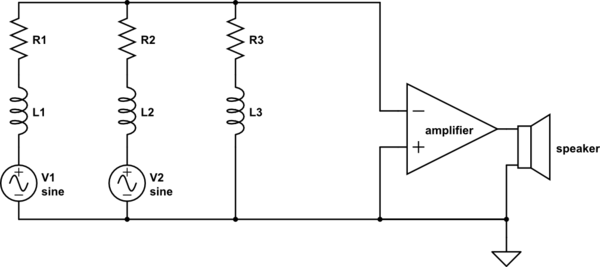I am looking up wiring diagrams for electric guitar pickups and noticing that the common method for combining two pickup signals is just to have a switch that can optionally have both the hot leads shorted together and routed to the volume potentiometer which then goes to the output
The pickups use a magnet and a vibrating metal string to generate an electrical signal. Sometimes guitars can combine multiple pickups using a switch that changes which pickup(s) get shorted together and routed to the volume potentiometer.
I understand the way to combine them in series, having the ground from one connect to the hot from another, and then the second one is grounded and thus when its hot generates voltage it artificially lifts up the "ground" reference for the first one so the total output that goes to the volume knob is the combined signals. This seems like a way to create a passive mixer signal without the need for an op-amp. Incidentally this is how humbuckers work in normal operation (non-coil-split mode) with their magnets being anti-aligned so it cancels noise.
What i don't understand is when they are in parallel, if each generates a different voltage and they are shorted together how does that not cause massive current problems. If the hot of the first is generating 1 volt and the second generates 2 volts and their hot leads are tied together wouldn't it cause massive current (since low resistance of copper wire) between the hot of the first and the hot of the second?
Someone please explain how shorting these together mixes the signals.

